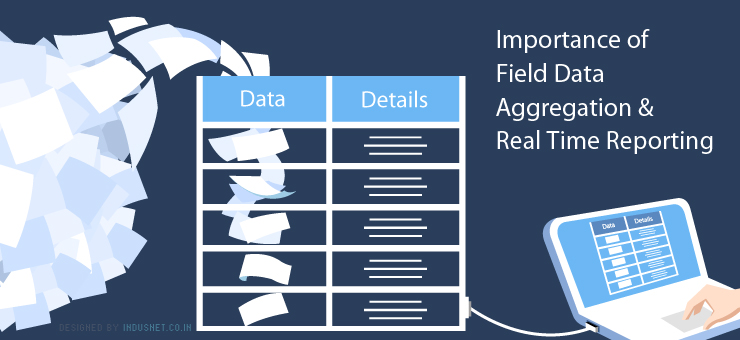
Data aggregation is the process of bringing homogeneity of data fields and data structures across a collection of data sources and compiling them to deliver meaningful information for businesses, investors, shareholders, customers using approaches as statistical analysis. A marketing organization would surely be interested to design a specific strategy for a geographical territory after analyzing the data from the sales force of that region and customer suggestions on product improvement.
The raw data can further be segregated on the basis of age, income, profession and so on. And it is a continuous process of data collection and analysis to generate advanced and real time reports rather than tardy ones. In such a case, mounting your company’s software and mobile technologies is an absolute must to deal with increased data flow into the organization.
Inadequate data aggregation, insufficient risk reporting and ineffective IT systems amount to major drawbacks in age of high speed internet and technologies such as RFID, EDI to name a few. Nonetheless, data mining and aggregation of key data from multiple business units does pose a challenge and the challenge magnifies in the era of mergers and acquisitions.
Importance of field data aggregation
Data sources –
With crucial data cascading from different sources to your business, it becomes imperative for you to aggregate it into meaningful reports. A successful organization is one which gives equal importance to the views of their employees and customers. A lot of enterprises get field data from various sources including ERP, CRM, SAP, knowledge & supply chain management tools, sales force PDAs, tablets, smartphones etc. The data needs to be structured and organized to help you make crucial business decisions.
Data quality –
Maintaining data quality is extremely important to avoid data redundancy. If unchecked, it usually amounts to collection of huge amount of data which conveys similar or no result at all. To avoid this, common data fields and coding should be employed. Though it is agreeable that there are technological obstacles that hamper data acquisition but it is essential to deliver high-quality data consistently and keep the costs associated with effective implementation under control.
Data reports –
Create useful reports that make sharing across the departments, sister concerns and most importantly with your customers easier. All efforts should be made to focus on “big data” structuring as a priority to avoid hassles at a later stage. Furthermore, it enables the companies to be prepared for risk management. For instance, Basel Committee on Banking Supervision (BCBS) published a consultative paper in June 2012, “Principles for Effective Risk Data Aggregation and Risk Reporting” advising banks to improve their financial risk management systems covering four key areas as governance and infrastructure, risk-data aggregation capabilities, risk-reporting practices, and supervisory review, tools and cooperation. And it can definitely be done by ramping up their information technology and data architectures.
Significance of real-time reporting for businesses and clients
We have often seen that there is overlapping and confusion when there is information sharing across different organizations through multiple channels of communication including phone, emails and various other message sharing platforms. To have a direct access to real-time data by the staff members, it is important to have real-time information system in place to increase the productivity and efficiency of the organization.
The main purpose of real-time reporting is that the crucial business data can be timely utilized by the needful persons inside and outside the organization. For instance, HMRC (Her Majesty’s Revenues and Customs) made it mandatory for small businesses and micro employers to do real-time reporting of PAYE following the introduction of new tax reporting requirements this year.
Advantages of real-time reporting to businesses and customers:
• Help them evade risks and uncertainties in business operations
• Help them in keeping their business operations smooth and organized by creating a single platform such as a website or cloud computing to enable instant access to information by different people at individual levels.
• Keep them away from so-called inevitable uncertainties and snags
• Increase their ability to make informed and timely decisions on up-to-date data and reports
• Help them save time and money
Thus, field data aggregation and real time reporting will continue to become ever more important in coming months and years.